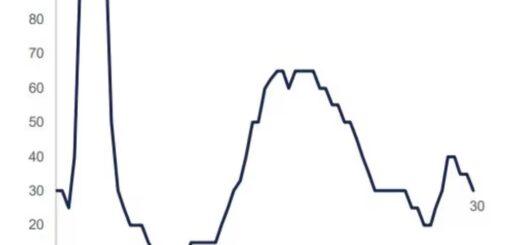The Silent Rally: Unveiling the Connection Between Consumer Sentiment and the Stock Market
The Consumer Sentiment survey by the University of Michigan provides additional reasons to worry about the condition of U.S. stocks and the economy.
The most recent University of Michigan (UMI) measurement reveals a notable increase in consumer sentiment, a pattern that frequently contradicts typical forecasts. The boost in the sentiment index from June to the preliminary numbers in July signifies the biggest jump since December 2005. Throughout the previous year, the sentiment gauge has climbed by 21.1 percentage points, signifying one of the largest year-on-year increases since this monthly study began in 1978.
In the past, significant hikes such as the current one have led to substandard performance, as illustrated in the attached chart. A minimum increase of 17 percentage points was essential to be counted among the top 5% of months with the greatest growth over the previous year. Thus, the initial reading in July comfortably fulfills this criterion. The performance data for the S&P 500 SPX, +0.71% are the total return figures, factoring in inflation.

Contrary to popular belief, a rise in consumer confidence does not necessarily precede substantial returns in the stock market. The trend more commonly observed is that consumer sentiment often coincides with, rather than anticipates, market fluctuations. This was clearly demonstrated in the past year when a boost in investor confidence resulted in increased buying of equities, which in turn drove the market upward. Therefore, the expected surge in the stock market due to increased consumer confidence has already taken place.
The diminished yields following the surge of excitement are because of our propensity to overreact. When we are euphoric, we often get excessively ecstatic. When our positivity wanes, we typically fall into despondency. Such heightened responses frequently lead to a certain degree of modification, in accordance with the tenets of contrarian analysis.
Reflect on the past year when the UMI sentiment index experienced a serious decline, marking the largest decrease over a 12-month span from June 2021 to June 2022 since the year 1978. However, currently, the S&P 500 witnessed a total growth of 20% in returns.
The present emotional atmosphere is entirely different from what it once was. Proponents of growth need to take note.




